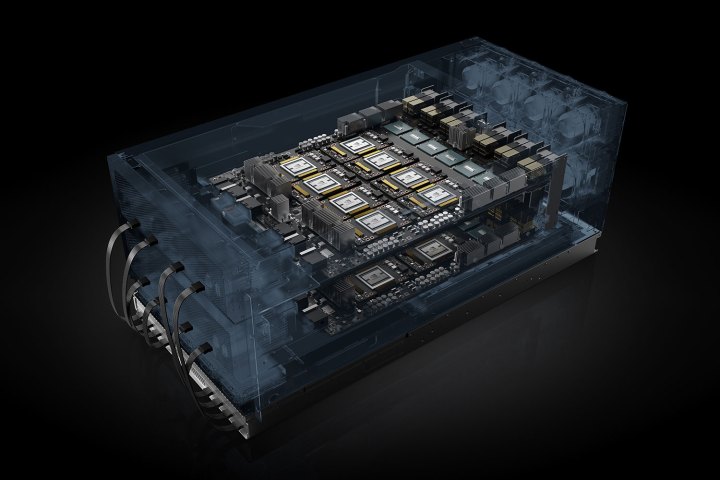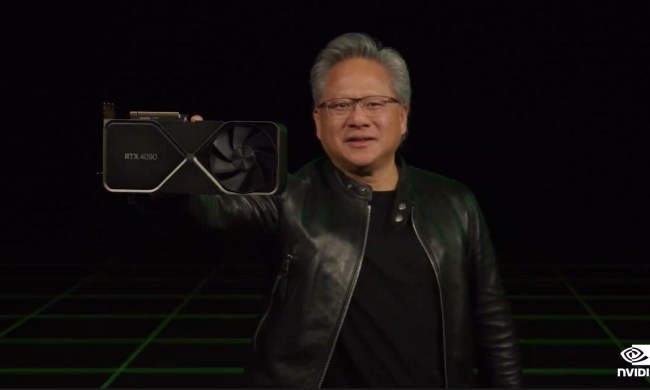
Nvidia has laid claim to building the “fastest single computer humanity has ever created,” by linking up 16 of its Volta-generation Tesla V100 graphics cards in a fashion that lets them operate as a singular unit. The Nvidia NVSwitch interconnect technology that facilitates it gives the sum of the whole two petaflops of computing power.
Unsurprisingly considering the new focus Nvidia has on artificial intelligence and data processing in recent years, this new HGX-2 GPU server is designed to aid those industries. With a half-terabyte of high-bandwidth memory (HBM) it is said to be capable of replacing as many as 300 CPU-driven servers on its own, offering a much more powerful and compact computing solution for data-driven tasks.
This is made possible through the combination of the 16 Tesla V100 graphics chips, which Nvidia CEO Jensen Huang claimed can “talk to every one of the GPUs simultaneously at a bandwidth of 300 GB/s, 10 times PCI Express, so everyone can talk to each other all at the same time,” per TechRadar.
But this GPU-driven powerhouse is just the beginning. Although incredibly capable in its own right, it could simply act as the basis for even more powerful arrays of graphics card processing systems.
“With the HGX-2 server building block, we’ll be able to quickly develop new systems that can meet the growing needs of our customers who demand the highest performance at scale,” Lenovo’s vice president and general manager Paul Ju said.
This news was announced at Nvidia’s own GPU Technology Conference in Taiwan and comes just a week ahead of the larger Computex show which will no doubt bring more news of Nvidia hardware developments. However, as exciting as it is, it will not be of much use to Nvidia fans who are clamoring to learn more about its next-generation graphics cards. We still don’t know if they will be Turing, or Volta based, or be called 1100 or 2000-series cards. What seems likely though, is that they will be very powerful.
Considering it’s been two years since Nvidia released its last-generation graphics cards and prices have been rather crazy since then, we would certainly hope so.




